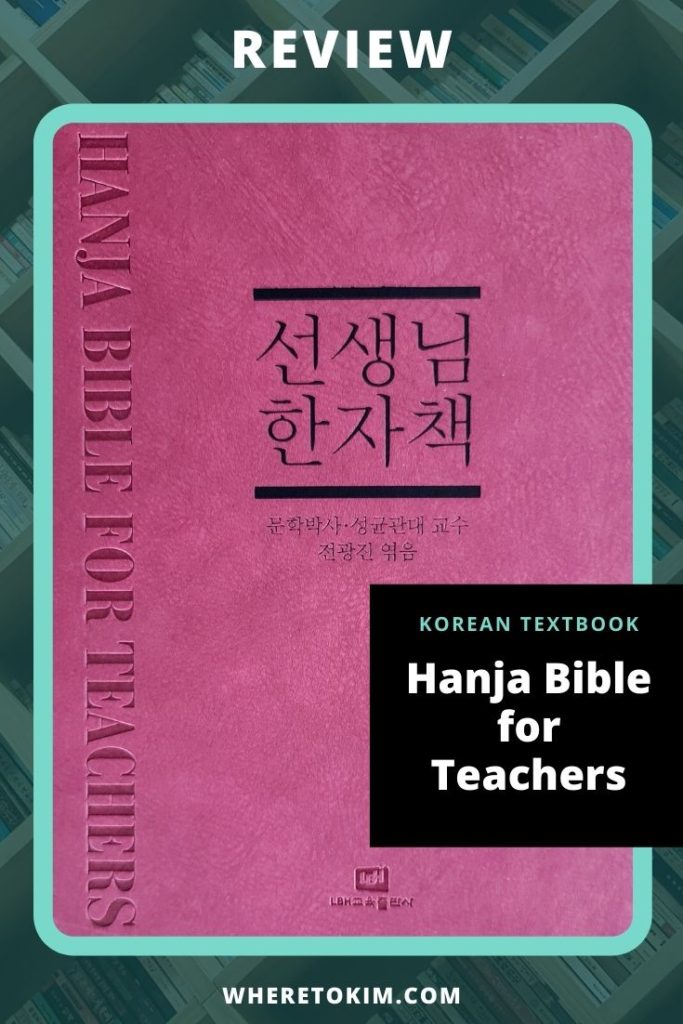Do you like characters? In this Korean Hanja dictionary, you can look up 2355 Hanja and find out what Korean words they are used in.
Why learn Hanja (Korean characters)? It’s not about the Hanja themselves, but about creating understanding. By learning which characters a Korean word of Chinese origin consists of, you will learn new words faster. Let’s take 정 (正) as an example. This part means “correct” and you can find it in words like 정확하다, 정각, and 부정. If you know that correct is a possible meaning of 정 (not the only one), you can sometimes guess the meaning of words you encounter for the first time. You can also infer these meanings by looking at many Korean words, but this is less efficient.
As a Korean language learner, you don’t need this rather expensive book at all. This Hanja Bible is only for those with an (unhealthy) academic obsession with characters and languages (like me!). In this book, you will find an overview of all these characters that are hardly used in everyday life, except for the occasional character in the newspaper (like north 北) and the characters for big (大), middle (中) and small (小) in markets. Hanja is used more in academic books, but most non-Koreans are unlikely to read them. Thanks to the invention of Hangul, Korean is quite easy to read.
Content
Let’s take a look inside.
Hanja
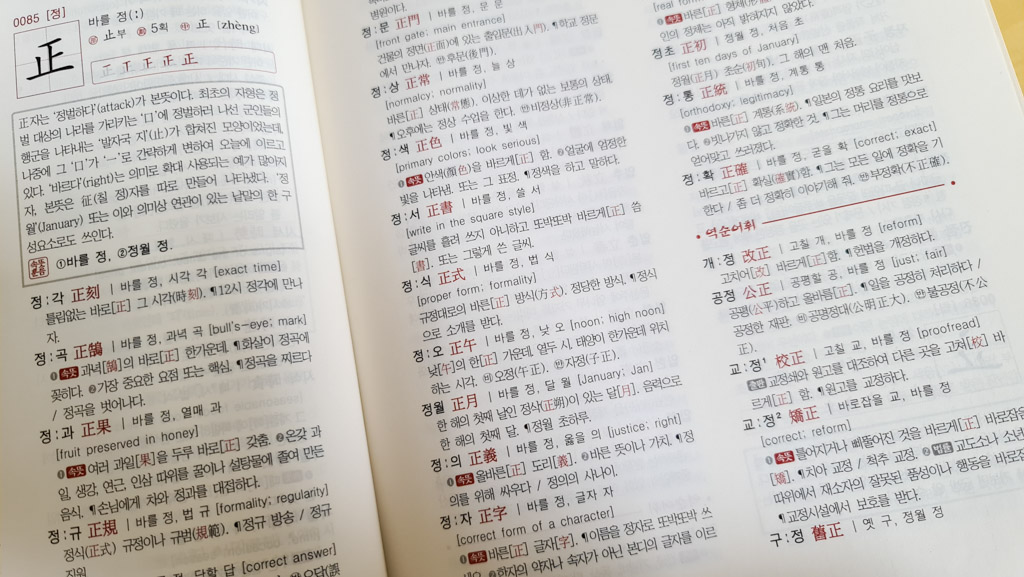
In this Hanja Bible you will find 2355 Hanjas arranged by school level, spread over 1227 pages. The Hanja for the lower levels are more detailed than the later ones. This is only natural because the last few hundred characters in the book are less common and occur only in a few words such as place names.
For each Hanja you see:
- The shape of the character plus a drawing of the stroke order and the number of strokes.
- The radical.
- The Chinese character it corresponds to and the Pinyin. If only they’d included the Japanese characters and pronunciation this book would have been perfect.
- The pronunciation and meaning of the character. For 正, this is listed as 바를 정 and 정월 정, where the first words indicate the meaning and the second words indicate the pronunciation. These descriptions help you talk about the characters and distinguish them from other characters pronounced 정. The meaning is further illustrated in a short text box that often includes English translations of the examples.
- A list of Korean words in which this character was used as the first or second character. These examples include the Korean word in Hangul, the Korean word in Hanja, the separate meanings of both characters used in the word, an English translation, and a Korean explanation of the meaning.
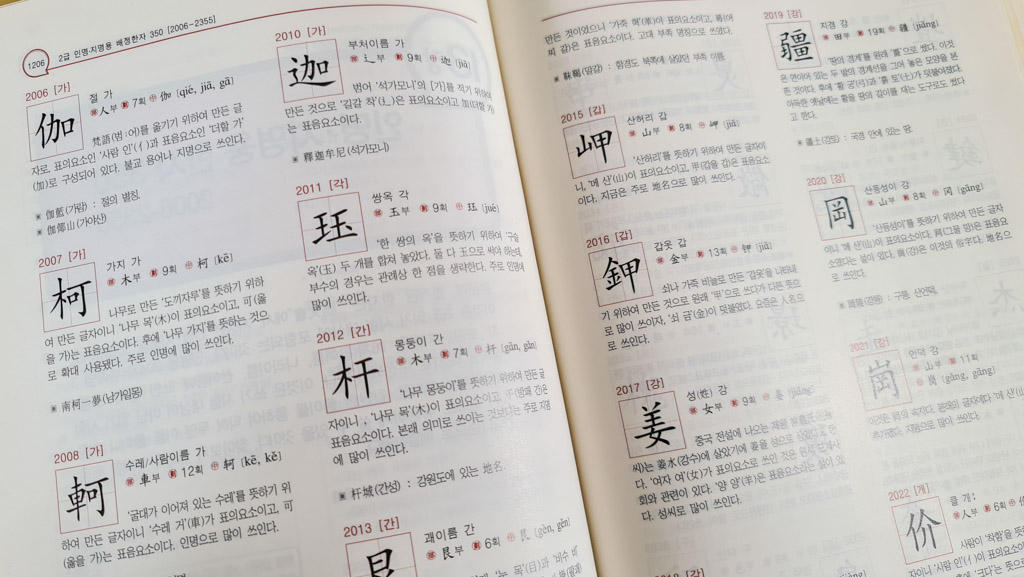
The design of the entries is very pleasant and you can easily find the information you are looking for. The use of red, black and gray ink, the indents, squares and bold formatting is excellent. The book is quite large, so you will not carry it with you everywhere, nor will you use it anywhere but at a desk. But the positive side of this is that the book has a lot of information and the font is large enough that you can read the text from a distance and tell the characters apart.
Addendum
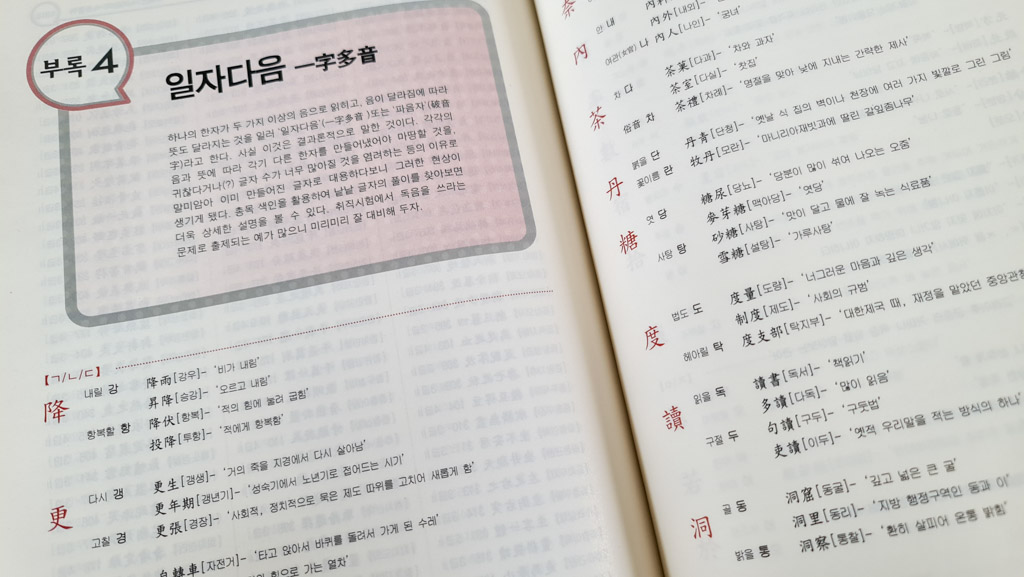
In the first part of the addendum, you can read more about the origins of Hanja and how they are constructed. This section helps teachers explain the material to their students. What may be more interesting for Korean language learners is the second addendum which explains different ways Hanja can be combined to make Korean words, whether it is a verb plus a noun, an adverb with an adjective, or some other combination. The third addendum lists the four character idioms (사자성어) both ordered by school level and alphabetically.
Since this book is aimed at teachers, most of the information in the addendum is intended to be imparted in the classroom. However, the following sections are also incredibly useful for foreign language learners: they address common mistakes made by Hanja learners.
- The fourth section contains some characters with more than one pronunciation. Remember how the negative (不) before a word can sometimes appear as 불 or 부? Don’t worry, it doesn’t get as bad as it does in Japanese.
- The fifth section then explores the characters with multiple pronunciations some more by listing the most common mistakes made by not using the correct alternative meaning.
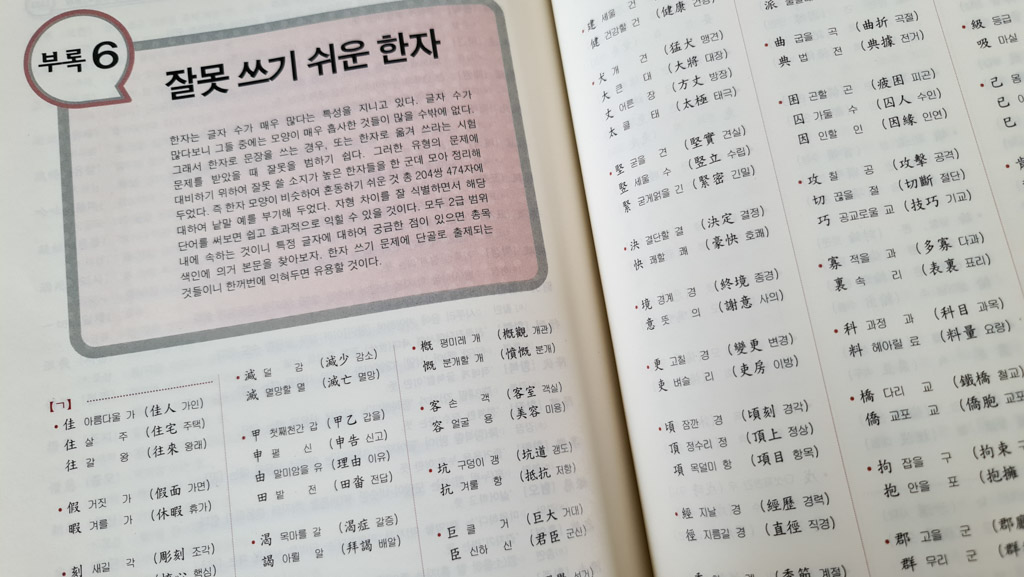
Section six is perhaps my favorite addendum because it lists characters that are very similar and are often confused with one of the others. A perfect study tool to help you finally tell these characters apart. If you are also learning Japanese or Chinese then it will be very helpful if you improve your character recognition skills in this way.
Indexes
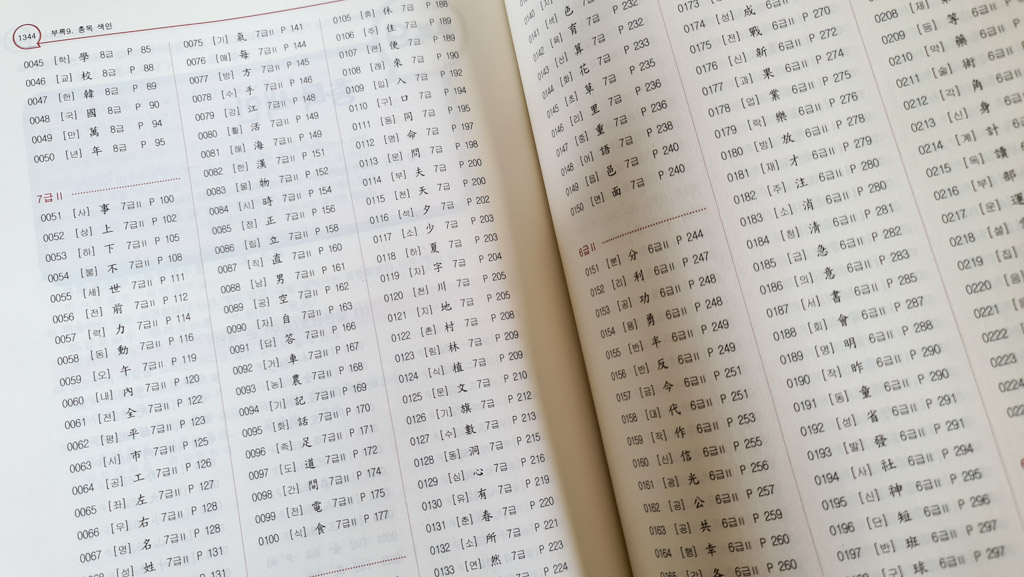
At the very end of the book you find two indexes (sections seven and eight):
- Hanja ordered by school level
- Hanja ordered by pronunciation
Both indexes list the Hanja’s pronunciation, character shape, school level and page number. You will use the second index the most because it is perfect for quickly finding characters and also for studying a specific morpheme. If you want to know what meanings to expect for words containing the 정 element, you can study the thirty characters pronounced 정. Don’t let this number discourage you: not all of them are used often.
Interested?
Are you interested in learning more about Hanja at a more academic level? Then this resource is perfect for you. If you are a casual learner, then you can safely ignore this book. You can buy the Hanja Bible for Teachers from Gmarket.
Also read: Best Textbooks for Learning Korean
